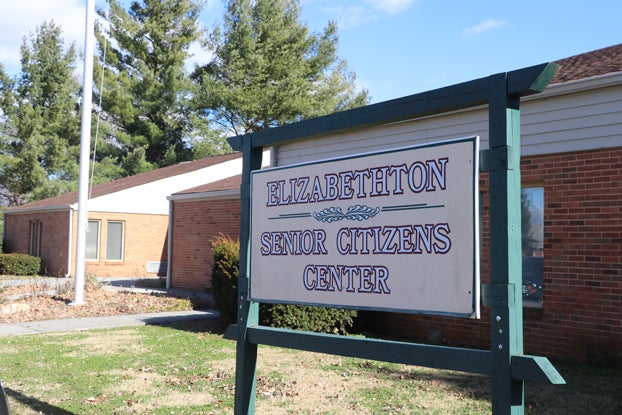ETSU students put Johnson City on the map in CDC mask wearing study
Published 11:25 am Wednesday, May 19, 2021
|
Getting your Trinity Audio player ready...
|
University is one of 66 sites chosen nationwide to participate in data collection
JOHNSON CITY — A team of graduate students from East Tennessee State University College of Public Health have been busy placing Johnson City on the map as they conclude four months of local observations for the Centers for Disease Control and Prevention’s (CDC) national MASCUP! study.
Under the direction of Dr. Sam Pettyjohn, research assistant professor, ETSU is one of 66 locations nationwide chosen to assess mask wearing behaviors at U.S. colleges and universities as part of a larger “Mask Adherence Surveillance at Colleges and Universities,” or MASCUP!. Students have collected field data gathered on and off campus.
Since February, Pettyjohn and 11 students in the Master of Public Health program have canvased ETSU and other designated locations in Johnson City where they have studied the rates mask wearing behaviors and local adherence to CDC COVID-19 prevention guidelines, and how these rates changed over time. A total of 10 sites, five on campus and five in Johnson City, such as national retail and grocery chains or other local businesses, were chosen for their high foot traffic and proximity, then observed unobtrusively throughout the course of approximately 3,000 total observations during the spring semester—one of the longest such studies in the national study.
Students were first trained in passive observation skills, then data were collected and logged by smartphone app and placed into the CDC databank as observations were made.
“Each student received CDC training on how to observe the public and quickly tell if they were not only wearing a mask but wearing it correctly, as well as how to utilize various research sampling techniques,” said Pettyjohn, noting the added value to their future vocations. “With those skills they are now equipped to complete future observational work that is up to CDC standards. They have received a concrete set of skills and experiences from which we benefit with a better sense of current public health issues and how to address those, while they walk away prepared to do this kind of work as public health professionals.”
Ada Sloop, student and MASCUP! field observer, said, “This study has given me a chance to be a part of something larger than the next assignment. We are living through a chaotic time and being able to help in a little sliver of the work that public health is doing during this pandemic is rewarding.”
Sloop and other team members will also assist the national project team this summer with publication and dissemination of collected information.
“It’s hard to think about what life after COVID will look like, but some day we are going to want to know more about how this virus affected us,” said fellow student and observer Ahauve Orusa. “We are going to want to analyze it. We will want to know about how our regions fared, how our hometowns fared. We will want to know what changes we made to our daily lives to protect ourselves and others from contracting the virus. We will likely be teaching and talking about this pandemic over the many next generations….Part of the call of a public health researcher in a situation like this is to be on the ground collecting data that have the power to tell a story about history, or to inform the public health decisions. Being on the ground collecting data for the CDC has been an amazing opportunity that has the potential to be used in so many ways for learning.”
According to Pettyjohn, local adherence to mask wearing was high based on locations observed. “It is higher on campus, but high in our community in general. At some sites we observed as high as 95% compliance in Johnson City, and as high as 100% on campus.”
Student researcher Jacob Mitchell said the study has opened his eyes to the importance of taking action in meaningful research on a larger scale. “It has also given me a more concrete understanding of mask utilization in Johnson City and made me conscientious of ‘mask-wearing faux pas’ we all commit at some point, such as wearing it below our noses without realizing it. Everyone has their part in combatting this pernicious virus and the past few months have made me feel like I have made strides in fighting COVID-19.”
In making those strides, said Pettyjohn, “it’s really just a matter of continuing to stay diligent. As a public health professional, I believe we are still in the middle of fighting this pandemic. When we’re talking about vaccinations, when we’re talking about stopping community spread, we have the tools to win and do it right. According to recent guidance from the CDC, those people who haven’t been fully vaccinated need to continue social distancing and mask wearing. At the same time, we, as a society, need to continue to drive up our vaccination numbers. We need to continue to be patient and practice. We’ve had a really long time to get good at this, and we need to stay good at it, sticking with CDC guidelines, so things will be back to some sense of normal faster.”
“There is no question that the past year has shaped history,” concluded observer Alex Condra. “Many people will look on this period of time and wonder what the country did and did not do well in dealing with the pandemic. By working on this study, it is my hope that I have assisted in answering some of these questions.”
For more information about MASCUP!, visit www.etsu.edu/cph/rural-health-research/mascup.php or contact Pettyjohn at pettyjohns@etsu.edu. For more about ETSU College of Public Health or the Master in Public Health, call 423-439-4332, email rogerst@etsu.edu or mphcoordinator@etsu.edu.







